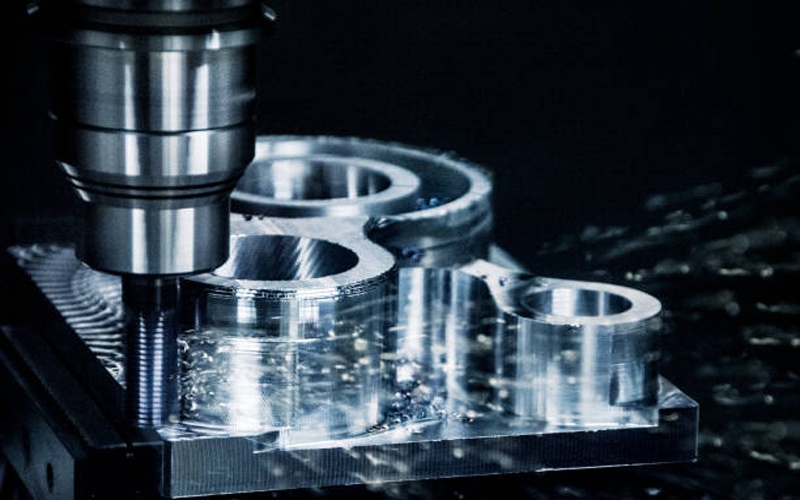CNC milling is a highly effective and precise manufacturing method used in various industries, including automotive, electronics, and machinery. However, like any advanced technology, it comes with its own set of challenges. For businesses looking to produce high-quality parts with the best possible precision, understanding common errors and problems in CNC milling is crucial.
In this guide, we will walk you through the most frequent issues encountered during CNC milling processes and provide expert tips on how to avoid them. Additionally, we will explore how precision CNC milling services and CNC turning can be used to produce high-quality components for industries like automotive and electronics, with a particular focus on the innovative solutions offered by Audapu.
Common Errors in CNC Milling and How to Avoid Them
1. Tool Wear and Tear
One of the most common problems in CNC milling is tool wear. As tools wear down, they can produce inaccurate cuts, leading to parts that don’t meet specifications. This is particularly problematic when working with CNC turning parts for machinery or CNC turning parts for electronics, where precision is critical.
Solution:
-
Regular Tool Monitoring: Implement regular tool inspections and maintenance. This will help ensure that tools are sharp and able to perform cuts accurately.
-
Use High-Quality Tools: Invest in high-quality cutting tools designed for longer durability and reduced wear, especially when working with hard materials.
2. Incorrect Machine Calibration
Another significant issue in CNC milling is improper calibration. Even slight misalignments in the machine can result in dimensional errors, affecting the precision of parts.
Solution:
-
Perform Regular Calibration: Make sure to regularly calibrate CNC machines to ensure accuracy.
-
Use Digital Probing Systems: Digital probing systems allow for real-time checks of part alignment and dimensions, which can help identify issues before they become major problems.
3. Improper Programming or G-Code Errors
Programming errors, such as incorrect G-code, can result in incorrect cutting paths, causing the machine to malfunction or produce faulty components. This can be particularly costly when producing precision CNC milling services for industries like automotive parts, where tolerance levels are stringent.
Solution:
-
Thorough G-Code Review: Ensure that all G-codes are thoroughly reviewed before machine execution. Double-check the code against the design specifications.
-
Simulation Software: Use simulation software to virtually test the CNC milling process before actual production. This allows you to identify and fix programming errors early.
4. Inconsistent Material Quality
Material inconsistencies can cause problems during CNC milling, including material warping or cracking. This is especially a concern for CNC turning for automotive parts or CNC turning parts for electronics, where the materials must meet specific standards for performance and durability.
Solution:
-
Quality Control on Raw Materials: Before starting the milling process, ensure that all materials are tested for consistency. Work with trusted suppliers, like Audapu, who specialize in providing high-quality materials.
-
Material Selection: Choose the appropriate material based on the intended use of the component to minimize the chances of material-related issues.
5. Improper Coolant Use
The correct use of coolants during CNC milling is essential for preventing overheating and ensuring smooth cutting operations. If coolants are not used correctly, parts can become damaged due to heat buildup, especially when working on precision CNC milling services for delicate electronics or automotive parts.
Solution:
-
Optimal Coolant Flow: Ensure that the coolant flow rate is optimized for the material and cutting tool being used. This will reduce the chances of heat-related issues.
-
Coolant Maintenance: Regularly clean and maintain coolant systems to prevent clogging or contamination that could lead to improper cooling.
6. Inaccurate Fixturing
Fixturing refers to how the workpiece is held in place during the milling process. Inaccurate or unstable fixturing can cause part distortion or incorrect cutting.
Solution:
-
Use Rigid Fixtures: Invest in high-quality, rigid fixtures that secure parts in place during machining.
-
Frequent Checks: Conduct checks to ensure that the fixturing system remains stable throughout the machining process.
The Role of Audapu in Preventing CNC Milling Errors
At Audapu, we understand that precision is key when manufacturing parts for high-demand industries like automotive, electronics, and machinery. By offering precision CNC milling services and CNC turning for automotive parts, Audapu ensures that all projects are executed with the highest level of accuracy.
Why Choose Audapu for Your CNC Milling and Turning Needs?
-
Expertise and Experience: With years of experience in providing precision CNC machining services, Audapu has mastered the art of delivering high-quality, durable components for various industries.
-
Advanced Technology: We use state-of-the-art CNC machines and software to ensure precision and minimize errors in every project.
-
High-Quality Materials: Whether it’s for CNC turning parts for electronics or CNC turning parts for machinery, we source only the best materials to meet the specific needs of your project.
-
Rigorous Quality Control: At Audapu, every part undergoes a strict quality control process to ensure it meets the exact specifications and standards required.
Conclusion:
Avoiding common errors in CNC milling is critical to ensuring that your parts meet the highest standards of precision and quality. By carefully monitoring tool wear, calibrating machines properly, and ensuring the use of high-quality materials, businesses can significantly reduce the chances of costly errors.
For industries like automotive, electronics, and machinery, working with a trusted CNC service provider like Audapu can make all the difference. With our commitment to precision CNC milling services and expertise in CNC turning for automotive parts and CNC turning parts for electronics, we can help you achieve flawless results for even the most complex manufacturing projects.
By understanding these common errors and implementing the right strategies, you’ll be well on your way to achieving high-quality, precise components every time.

